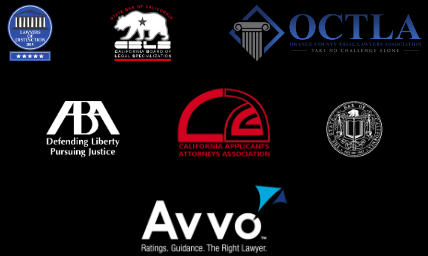The Subsequent Injury Benefits Trust Fund (SIBTF) in California is a critical component of the state’s workers’ compensation system. It provides additional benefits to workers who sustain subsequent injuries in the workplace when they already have a pre-existing disability or impairment.
To understand how SIBTF works, it is strongly recommended that you reach out to the best workers compensation lawyer in Riverside County, CA, and discuss your situation with them directly. To aid you in obtaining the compensation you’re rightfully entitled to, we have provided a breakdown of the qualification process and the steps involved in finishing a settlement. Read on.

Qualifying for SIBTF Benefits:
To qualify for benefits from the SIBTF in California, a worker must meet specific criteria. Here are the key factors that determine eligibility:
1. Pre-Existing Permanent Disability:
The worker must have a pre-existing permanent disability or impairment. This could be a result of a prior work-related injury, a non-work-related injury, or a congenital condition. The pre-existing disability may involve physical or mental impairments.
2. Subsequent Work-Related Injury:
The worker must then sustain a subsequent work-related injury. This injury must result in a permanent disability as well. It’s important to note that the subsequent injury does not necessarily have to be the same type of injury as the pre-existing disability. Any work-related injury that leads to a permanent disability can qualify.
4. Combined Disability Threshold:
The combined disability resulting from the pre-existing disability and the subsequent injury must meet or exceed a specific threshold. In California, this threshold is generally set at 70%. This means that the combined impairment ratings for the pre-existing disability and the subsequent injury, when added together, must equal 70% or more.
5. Apportionment Considerations:
Apportionment refers to the process of dividing the disability between the pre-existing condition and the subsequent injury. It is determined by medical evaluations and is subject to legal and medical rules. In some cases, if the pre-existing disability is found to be partially responsible for the combined disability, the SIBTF benefits might not apply.
Steps Involved in Settling a SIBTF Case:
Once a worker qualifies for SIBTF benefits, they may decide to pursue a settlement. Here are the steps typically involved in settling a SIBTF case:
1. Consult With an Experienced SIBTF Attorney:
It is highly recommended that the injured worker consults with an experienced workers’ compensation attorney specializing in SIBTF cases. An experienced SIBTF attorney can provide sound invaluable guidance throughout the entire SIBTF process, ensuring that the worker’s rights are protected and that the injured worker will receive the maximum benefits to which they are entitled under the labor code.
2. An Injured Worker Must File a Workers’ Compensation Claim:
If a worker in California sustains a work-related injury, they must report the injury to their employer as soon as possible and demand to seek medical attention. The employer is required by law to initiate a workers’ compensation claim, which will be evaluated by the insurance company providing the workers compensation insurance for the employer.
3. Medical Evaluation and Disability Rating:
A medical evaluation will be conducted to assess the extent of the worker’s disability. Disability ratings will be assigned based on the American Medical Association’s (AMA) Guides to the Evaluation of Permanent Impairment. This rating will help determine the amount of compensation the worker is eligible for.
4. Identification of Pre-Existing Disability:
During this process, the pre-existing disability or impairment will be identified and evaluated by the primary treating physician or a medical legal panel, such as a QME or an AME. Medical professionals and attorneys will assess the nature and severity of the pre-existing condition. Medical professionals will submit their findings to the insurance company case manager.
At that point the case manager will decide if the disability the medical professional has assigned to the injured worker is something they agree with. Typically, the insurance companies do not take the recommendation of a medical professional, unless it is an agreed medical examination in which both parties agree that the physician and his or her rating is final.
5. Combined Disability Rating:
The combined disability rating will be calculated, taking into account both the pre-existing disability and the subsequent work-related injury. If the combined rating meets or exceeds the 70% threshold, the worker may be eligible for SIBTF benefits. 70% is the threshold for an injured worker to receive a financial settlement. However, in order to qualify for a subsequent injury, the injured worker must have a WPI of 35% or greater or 5% bilateral disability to corresponding body parts.
6. Negotiations and Settlement Agreement:
The injured worker’s attorney will engage in negotiations with the SIBTF administrator, which is a state attorney assigned to each case who also handles unemployment insurance cases. The applicant attorney, representing the injured worker, and the lawyer, representing the state of California and the SABTF fund will work to reach a settlement agreement that outlines the terms of the compensation, including the amount and method of payment.
7. WCAB Approval:
The settlement agreement must be submitted to the Workers’ Compensation Appeals Board (WCAB) for approval. The WCAB will review the agreement to ensure that it is fair and complies with state laws. If an agreement cannot be made. Then the SIBTF case will go to a trial in front of a Worker’s Compensation judge at the Worker’s Compensation Board. All evidence will be introduced to the judge, and they will make a determination on the total disability percentage, and the dollar amount to be awarded to the injured worker.
8. Payment Method:
Depending on the terms of the settlement agreement, the worker may receive compensation through a structured settlement that would include bi, monthly payments, or, a lump-sum payment, or a combination of both. A structured settlement involves being paid bi-monthly while a lump sum provides a single, upfront payment.
9. Finalization of Settlement:
Once the WCAB approves the settlement agreement, the worker can expect to receive the agreed-upon compensation. It’s essential to ensure that all terms are met, and the settlement is executed as outlined in the agreement.
10. Ongoing Medical Treatment:
In some cases, the worker may continue to require medical treatment or rehabilitation. The settlement should account for these ongoing medical needs, and the worker should work closely with their attorney to address them. In summary, once an SIBTF case is settled. The insurance company is exonerated from paying any more money for medical treatment in the case. The case is considered final and closed, and the lump sum payment or the structured settlement are paid out. The injured worker is receiving the money that would go to any future medical treatment.
Can SIBTF Cases be Stipulated or Compromise and Released (C&R)?
Yes, SIBTF cases in California can be resolved through stipulated settlements or Compromise and Release (C&R) agreements, similar to other workers’ compensation cases. These settlement options provide flexibility and allow both parties to reach mutually agreeable terms. Whether a stipulated settlement or a C&R is pursued depends on various factors, including the preferences of the injured worker, based on the options, the injured worker and the SIBTF Attorney agree upon.
In a stipulated settlement, both parties agree to specific terms of the settlement, such as the amount and method of payment, as well as other conditions. The settlement agreement is then submitted to the WCAB for approval.
In a Compromise and Release agreement, the injured worker, their attorney, and the attorney representing the state agree on a lump-sum payment that represents the full value of the workers’ compensation benefits. Once approved by the WCAB, the injured worker receives the agreed-upon lump sum, which may include SIBTF benefits if applicable.
It’s important to note that the choice between a stipulated settlement and a C&R should be carefully considered, as it can significantly impact the injured worker’s financial situation and access to ongoing benefits. Applicant attorneys advise their clients whether to take monthly payments or one lump payment based on several factors. Some of these factors are age, current financial status, and the flexibility of the SIBTF, lawyer, to award, or if the case goes to trial, the flexibility of the judge, regarding the amount of the settlement to the injured worker.
In conclusion, the Subsequent Injury Benefits Trust Fund (SIBTF) in California provides crucial financial support to workers with pre-existing disabilities who sustain subsequent work-related injuries. Qualifying for SIBTF benefits involves meeting specific criteria, and the settlement process typically includes consultations with attorneys, medical evaluations, and negotiations. Settlements in SIBTF cases can be structured according to the preferences of the parties involved, whether through stipulated settlements or Compromise and Release agreements.

Where can I find the best workers compensation lawyer in Riverside County & other parts of CA to help with my SIBTF case?
Seeking legal counsel with an experienced applicant attorney that specializes in SIBTF cases is essential to navigate the complexities of SIBTF cases and ensure that injured workers receive the compensation they deserve that is also structured in their best interest.
To learn more about SIBTF you can visit the department of Worker’s Compensation at this link. Even better, you can reach out to California Workers Compensation Lawyers, APC and schedule a free consultation with an experienced work comp attorney in Riverside County and other parts of California directly.
Our website also offers a wealth of information about the other aspects of workers compensation. Want to know whether representing yourself or hiring an attorney is the better course of action when it comes to obtaining compensation? Interested in an in-depth analysis of how state-funded insurance companies in California operate or learning more about the medical provider network controversies in the work comp system? We can answer all of these questions and more.
Continue browsing our website or reach out to us directly today!








